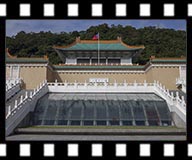National Palace Museum
After returning from Hualien, we spent half a day at the National Palace Museum (國立故宮博物院). (Click on each image to see the high-resolution version)
First, let's get a few pictures of the museum itself out of the way. The museum, identically named in Chinese as the Forbidden City in Beijing (故宫, or Former Palace), was actually built in the 1960s. Fortunate for us, finally after days of rain, the sky relented and even a rainbow appeared while we were outside.
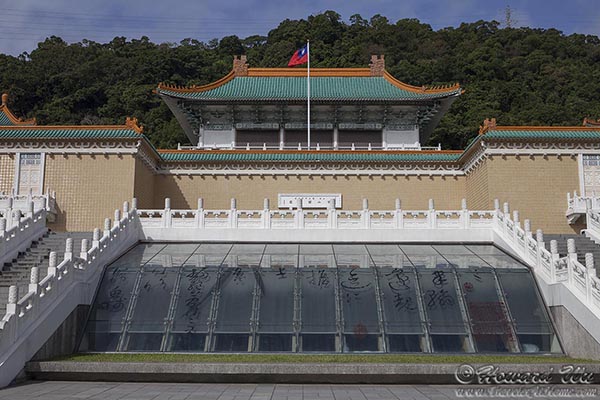
National Palace Museum
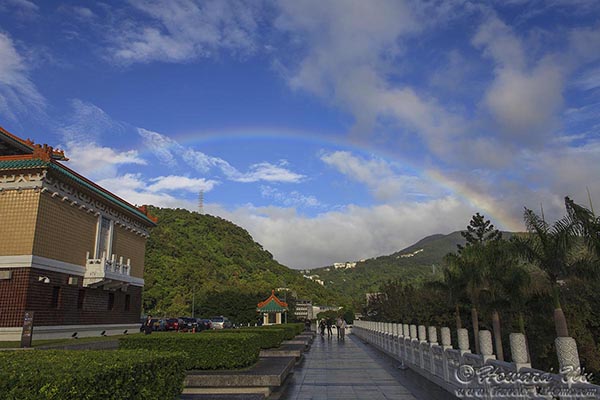
National Palace Museum
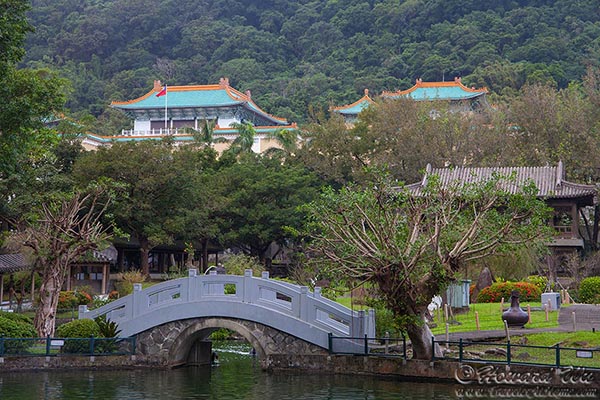
National Palace Museum (seen from the garden)
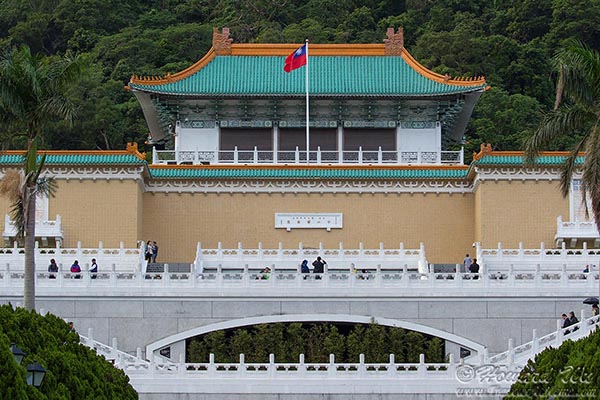
National Palace Museum
Of course, the most interesting things are the exhibits. Having its roots from the original palace in Beijing, this museum has a dazzling array of treasures. One of the most amazing marvel is the Jadeite Cabbage. The artisan utilized the natural green and white color of the stone to create a life-like replica of a cabbage. Not only this, he (or she) also carved two crickets on top of the vegetable! The cabbage seems so succulent that you can bite into it, and the insects look so vivid that are ready to hop out at any moment.
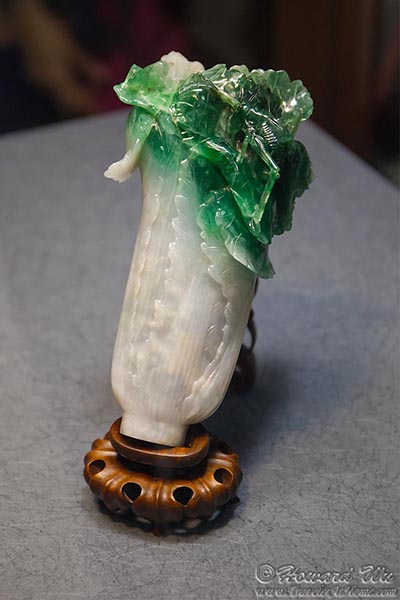
Jadeite Cabbage
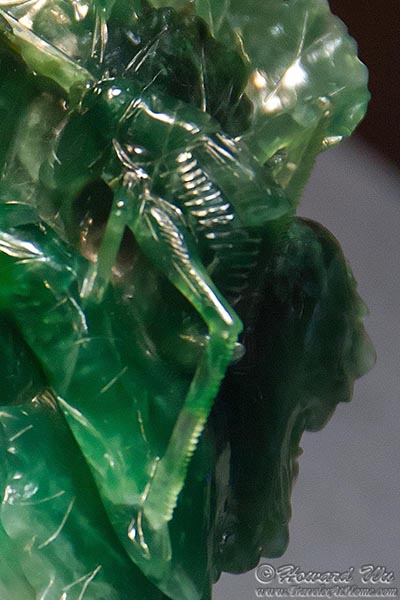
Cricket on top of the cabbage
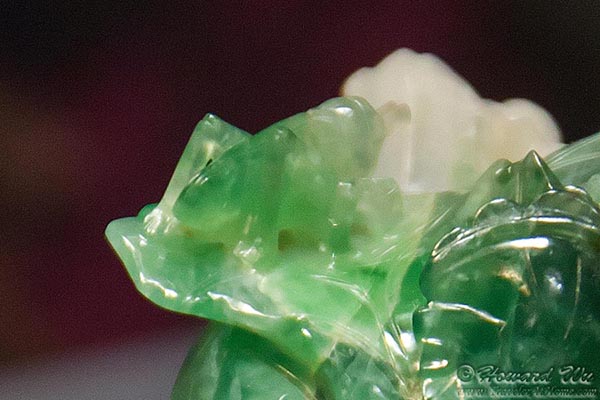
Cricket on top of the cabbage
The other two treasured items at the museum are not as pretty, but with much more important historical significance. These are the Mao Gong Ding (毛公鼎, Cauldron of Duke of Mao) and Zong Zhou Zhong (Bell of Zhou, 宗周鐘). It is mind-boggling to think that these stately bronze instruments are almost 3,000 years old (they are from the late West Zhou Dynasty 1046–771 BC)! Their significance, however, does not merely rest on their antiquity, but also the fact that both bear lengthy inscriptions. For this reason, both are the proudest pocessions of the museum, and they have a very concise and informative piece on these two artifacts. If you read Chinese, these two articles on the Cauldron and Bell are also very good.
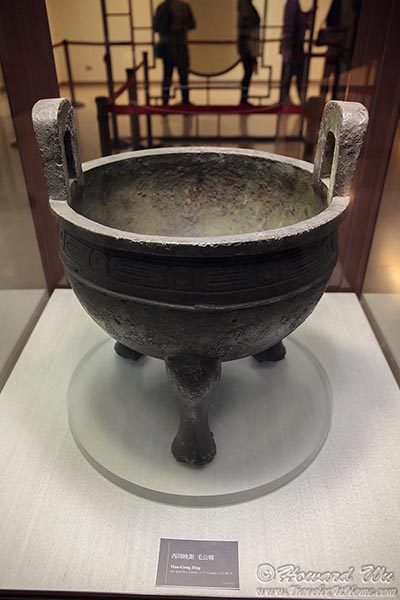
Mao Gong Ding (毛公鼎, Cauldron of Duke of Mao)
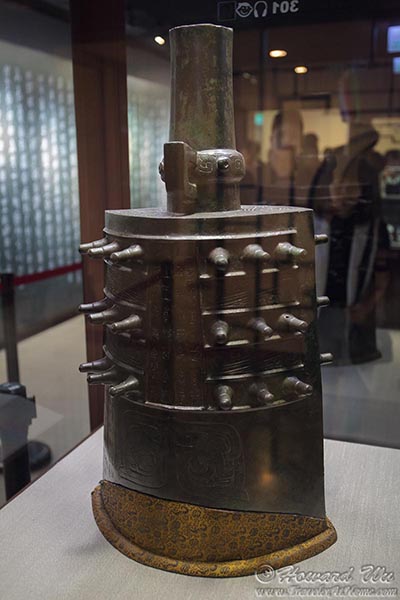
Zong Zhou Zhong (Bell of Zhou, 宗周鐘)
At the time of our visit, there was also extensive exhibits of Buddhist sculptures. The first one is the Sitting Bhudda of North Wei Dynasty (青銅鎏金釋迦牟尼佛坐像, from about 1,500 years ago), I rather lost track of the other ones.
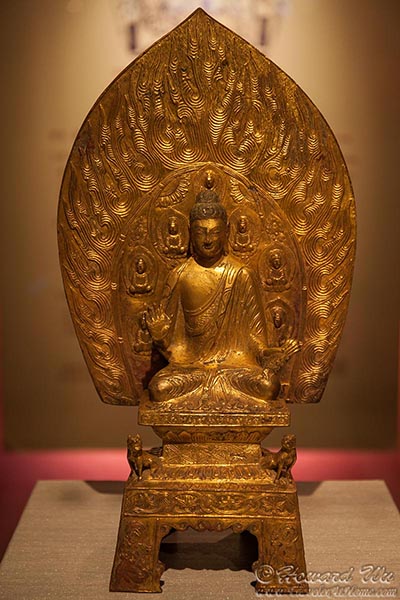
Buddhist sculpture (青銅鎏金釋迦牟尼佛坐像)
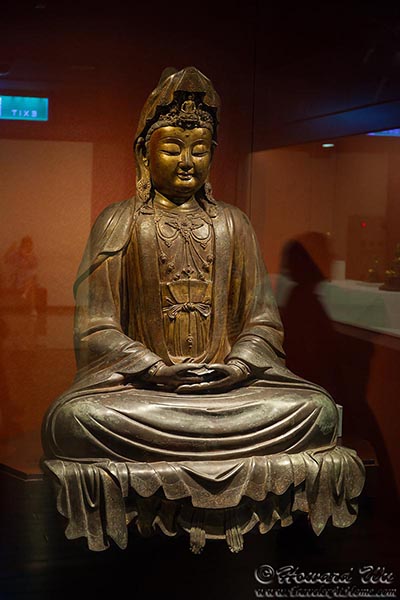
Buddhist sculpture
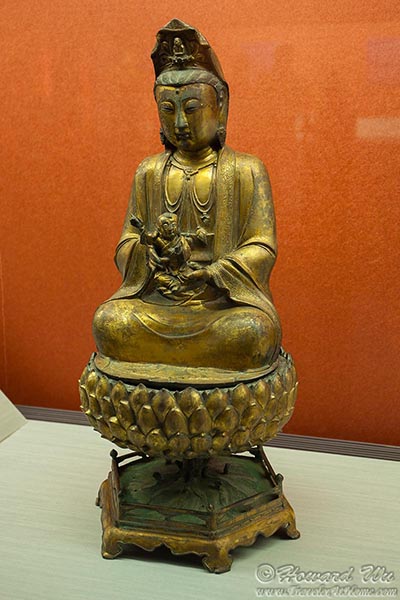
Buddhist sculpture
There were a few bigger Bhuddist statues in the exhibition hall, but I did not note down their names. I think that it is okay to admire the artifacts without registering all the information.
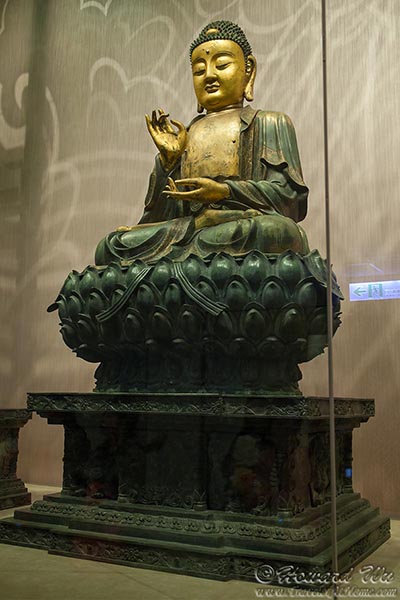
Bhudda Statue
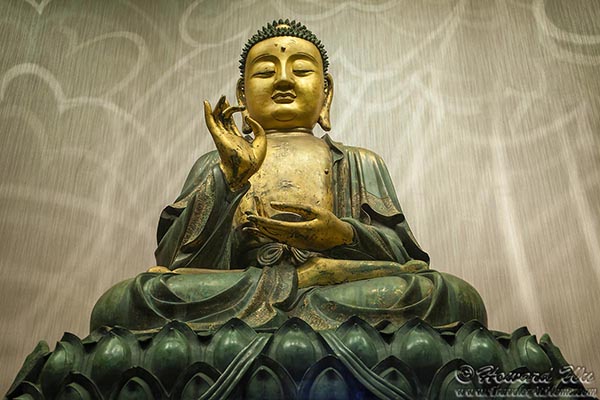
Bhudda Statue
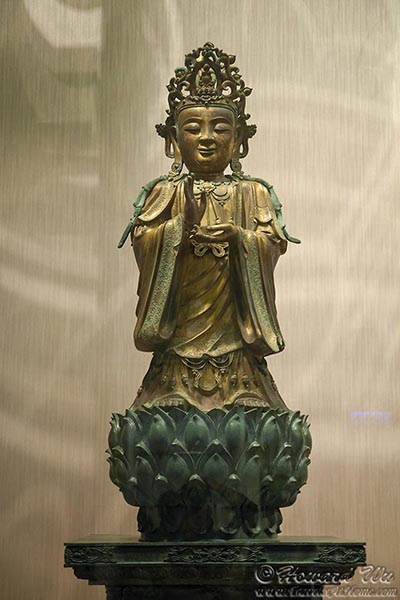
Buddhist Statue
Another important exhibit is a Clay Beauty from the Tang Dynasty (唐灰陶加彩仕女俑). The colorful glaze has worn off after nearly 1,400 years, but the figure is still vivid (though their notion of beauty apparently differed from ours).
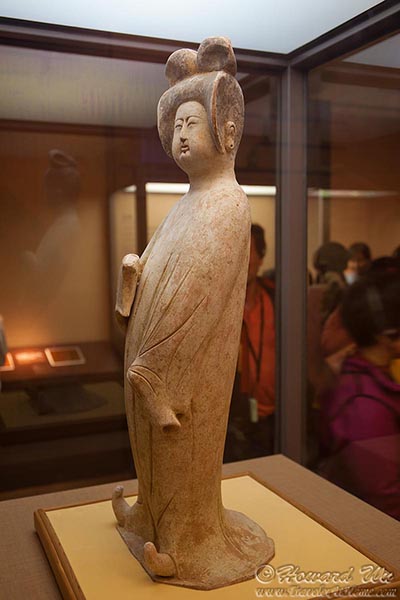
Clay Beauty (唐灰陶加彩仕女俑)
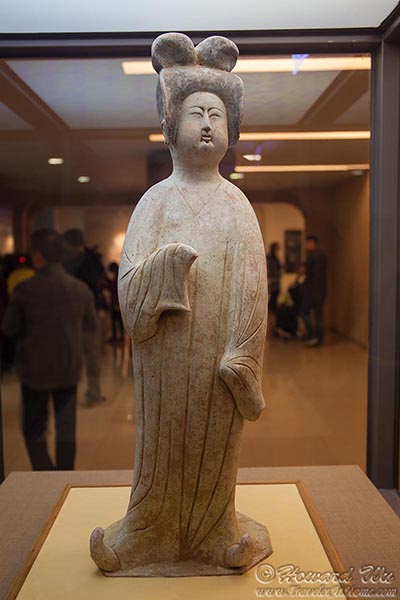
Clay Beauty (唐灰陶加彩仕女俑)
There was an exhibition of "Elegant Gathering of the Princess: The Culture of Appreciating and Collecting Art at the Mongol Yuan Court". The Mongolian Pincess in this painting is on the chunky side, if you ask me.
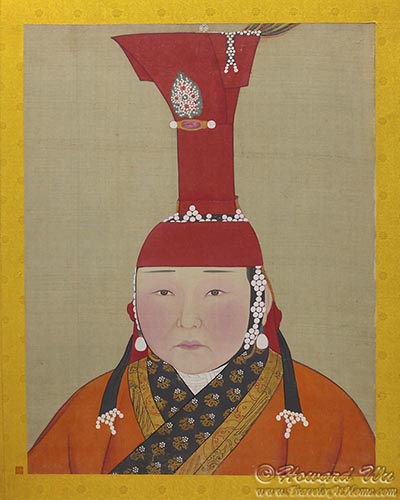
Mongolian Pincess
I found the paintings and drawings from different periods also very fascinating. The flower paintings are especially interesting, I think they are in fact biologically correct.
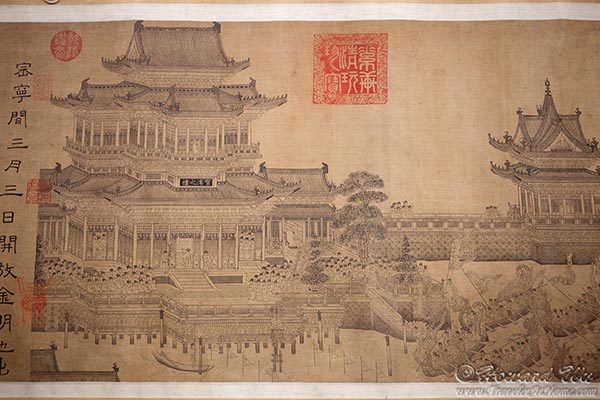
Painting depicting daily lives
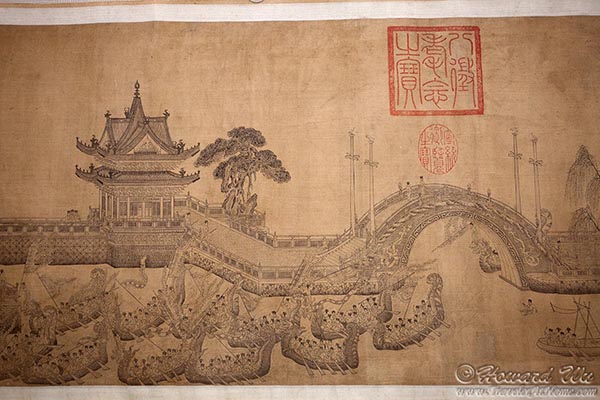
Painting depicting daily lives
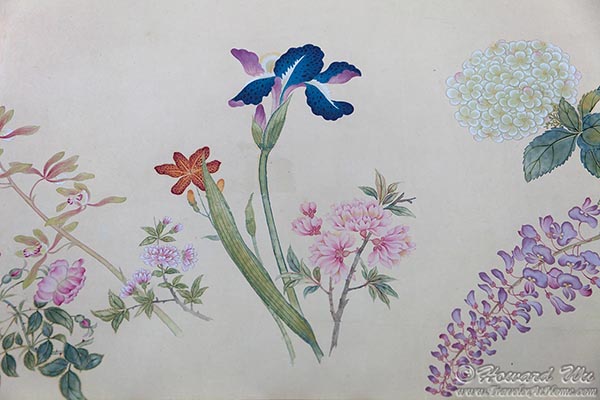
Painting of flowers
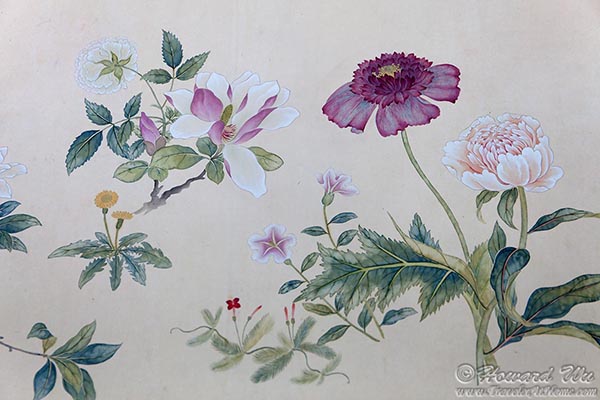
Painting of flowers
There were exhibitions of Tibetan paintings (Thangka), mostly religious-themed.
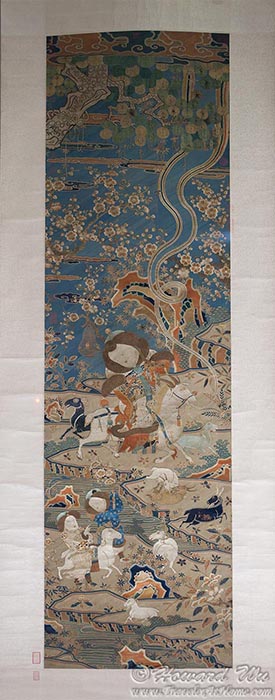
Tall Painting
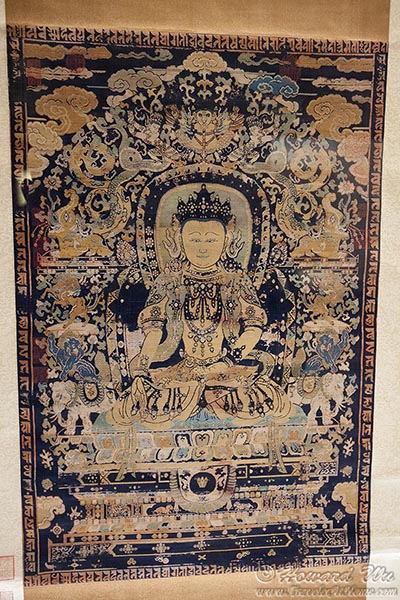
Thangka
The exhibitions are dazzling, and in a way exhausting. I will list a few other artifacts below without further explanation.
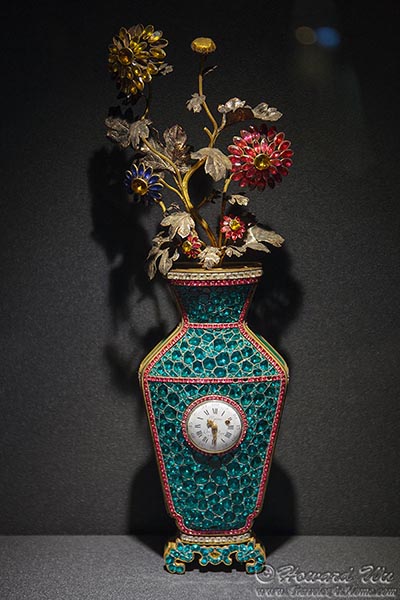
Clock Vase
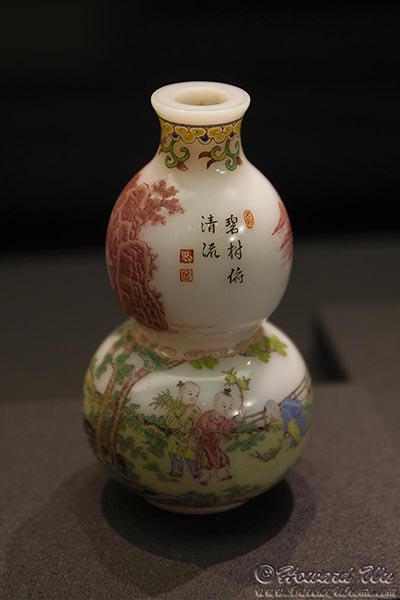
Gourd
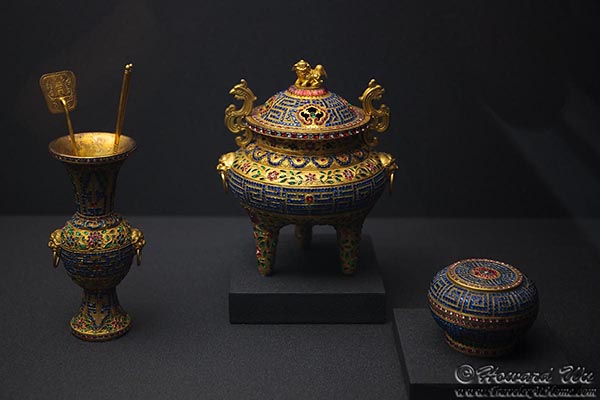
Incense Burner
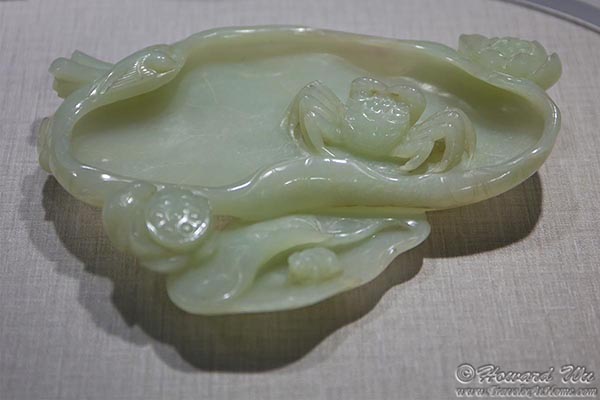
Jade Crab Tray
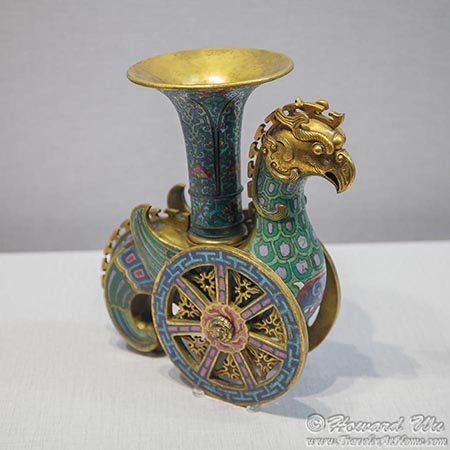
Phoenix Figurine
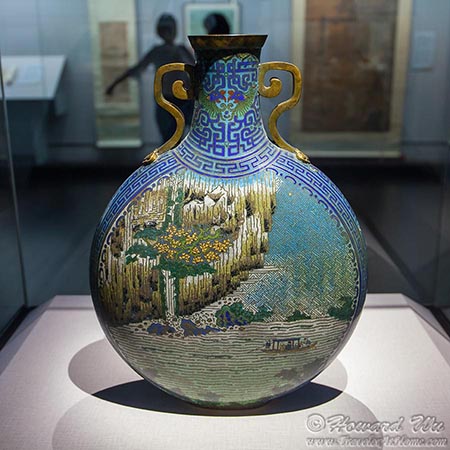
Vase
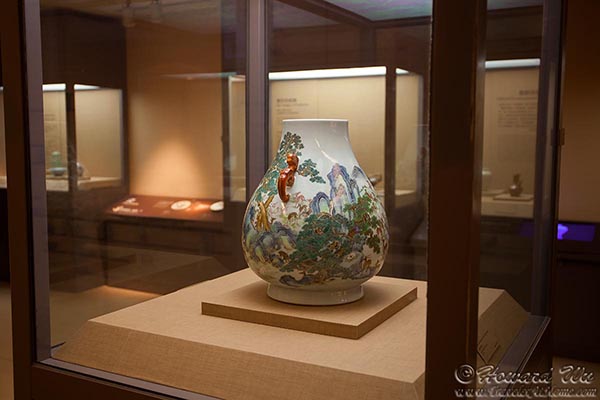
Vase
But not all the treasures are enclosed in glass-sealed display boxes -- there is a garden in the museum complex, and it was there that I saw the most magnificent "exhibit": a Common Kingfisher. You can see it in the Wildlife section of the Taipei page.
